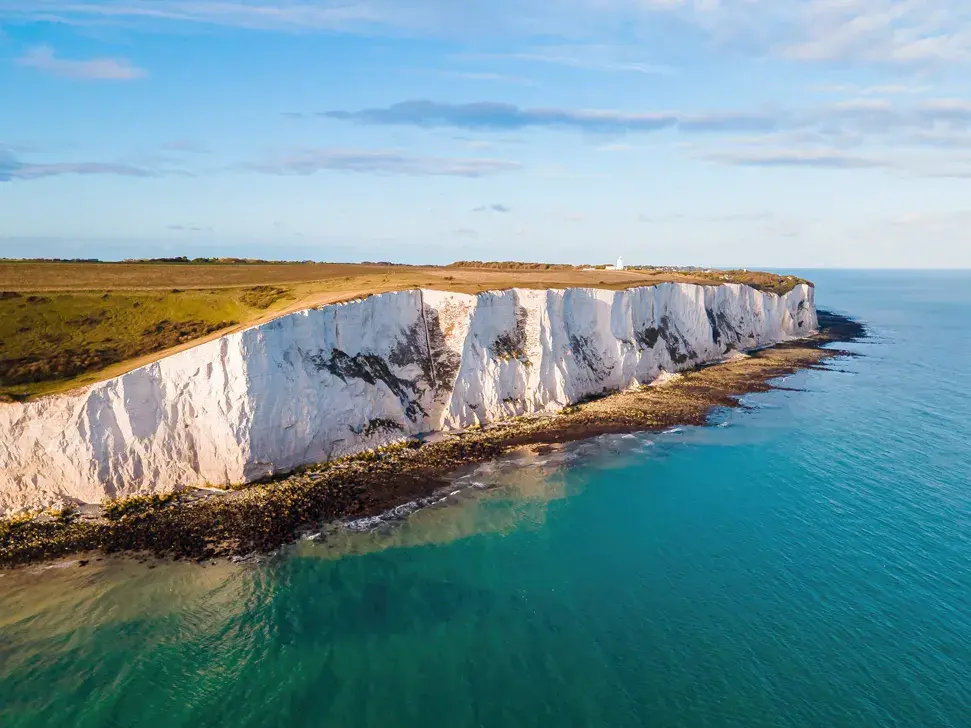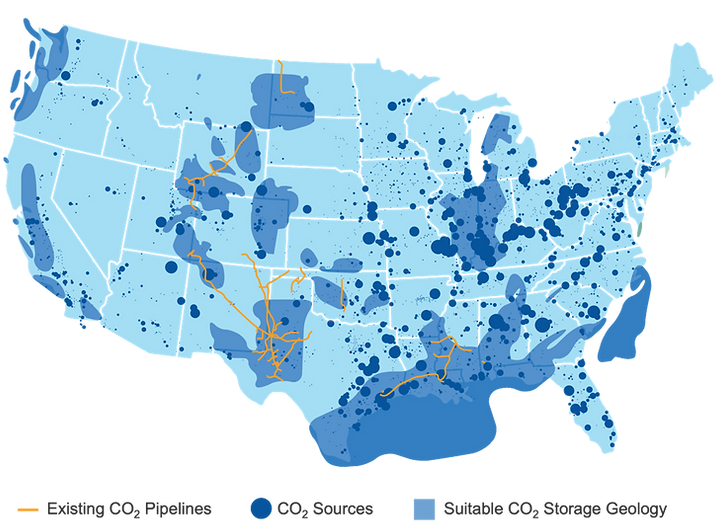Storing CO2
with Geologic
Sequestration
Geologic sequestration is a proven method of underground carbon dioxide (CO2) storage whereby CO2 is injected deep underground into deep rock formations for long-term storage. By capturing CO2 and storing it into these reservoirs, operators can prevent the release of CO2 into the atmosphere—protecting the climate, the planet and future generations.
Geologic sequestration has been in use for decades. The history of intense study and real world application by leading experts in the fields of geology, seismology, fluid characterization, well engineering and reservoir modeling means that today we have a powerful, proven tool with which to capture and store CO2 at scale.

How it Works
First, the CO2 must be captured. This could occur in a variety of ways, includingpoint-source capture at an industrial facility such as a power plant or manufacturing operation. Or atmospheric CO2 could be pulled straight from the air mechanically through the use of Direct Air Capture technology. Once captured, the CO2 is purified and compressed into a supercritical phase—a state with combined properties of gas and liquid.
Next, this CO2 is injected deep below the surface via a high-integrity well and intoan underground reservoir—often more than 5,000 feet down. Once the CO2 reaches the reservoir, it is securely sequestered through four trapping mechanisms.

Sealed by a Caprock (Hydrodynamic Trapping)
Here a nonporous, impermeable caprock serves as a giant lid, isolating any CO2 that is injected below it. This rock layer can be hundreds of feet thick and keeps CO2 trapped securely.

Locked in the Pores (Residual Trapping)
These reservoirs are not large, hollow spaces. They’re composed of huge strata of porous rock; more like a sponge than a cavern. When residual trapping occurs, the CO2 is contained within the tiny pores of the rock itself and rendered immobile.

Dissolved in Formation Fluid (Solubility Trapping)
Injected CO2 can also dissolve into the salty brines that naturally occur within the reservoir. This process of molecular diffusion is caused by varying concentration gradients. This dissolution increases the density of brines, causing them to sink even lower in the formation—reducing upward migration of CO2 and increasing reservoir storage capacity.

Turned into Minerals (Mineral Trapping)
With this form of trapping, the CO2 interacts with minerals present in the rock formation at the molecular level via a series of geochemical reactions. These reactions result in the formation of new, solid and stable carbonate minerals. The CO2 actually becomes part of the rock.

The White Cliffs of Dover in Kent, UK is a famous example of mineral trapping that features mineral chalk of calcium carbonate (CaCO3).

Safety and Security
The geologic sequestration of CO2 employs highly engineered wells that feature multiple layers of steel casing and cement. In the United States these are known as Class VI wells and are permitted by the United States Environmental Protection Agency (EPA). These structures are designed and engineered specifically to protect underground sources of drinking water and ensure safe long-term CO2 storage. Learn more about Class VI wells.
In terms of ongoing safety, each geologic sequestration operation undergoes an extensive Monitoring, Reporting and Verification (MRV) program that’s regulated by the EPA. This includes dozens of checkpoints that include:
- Exacting injection well construction and operation requirements
- Performing comprehensive monitoring of every aspect of well integrity, CO₂ injection and storage
- Monitoring of groundwater quality during the injection operation and post-injection site care period
- Ensuring that funds are available for the life of the project
- Extensive reporting and recordkeeping
- Additional wells are used to monitor the injected CO₂ in the reservoir
Storage Capacity
Geologic CO2 storage will serve as a mission-critical part of helping energy, industrial and transportation sectors decarbonize, making large-volume carbon capture possible.
In fact, experts expect the demand for geologic storage to grow. A recent analysis performed by the International Energy Agency reports that the need for CO2 storage is positioned to increase from 40 million metric tonnes per year today to more than 5,000 million metric tonnes by the middle of the century. The good news is that there’s plenty of room. Total global geologic CO2 storage capacity has been estimated to be as large as 55,000 billion tonnes¹.
There are specific site characterization requirements which must be met to establish a successful geologic CO2 sequestration location. Experts can assess the suitability of a site based on several technical, logistical and commercial factors. But potential storage sites are plentiful. The majority are onshore, either in saline formations or depleted oil and gas fields².
1PointFive is currently focused on developing sequestration hubs in the United States in areas where there is a convergence of suitable geology, industrial manufacturers and existing CO2 pipeline infrastructure.
UNITED STATES CO2 INFRASTRUCTURE, INDUSTRIAL EMITTERS AND SUITABLE GEOLOGY

Fig.1 U.S. Department of Energy’s public NATCARB database
OUR FIRST GEOLOGIC SEQUESTRATION HUBS ARE UNDERWAY
Numerous geologic sequestration projects are currently in play around the world. The United States is an important contributor of geologic sequestration capacity. Key U.S. regions bringing together the right geography, concentration of industrial emitters and access to existing CO2 infrastructure are already helping scale sequestration in the near term.
1PointFive is currently developing several sites for geologic sequestration in the Gulf Coast region to store CO2 captured at industrial facilities. Some of these sequestration hubs may be anchored by Direct Air Capture facilities.
In-Zone
Monitoring
Well
CO2
Injection
Well
In-Zone
Monitoring
Well

Sources
¹ IEA (2021), The world has vast capacity to store CO2: Net zero means we’ll need it, IEA, Paris https://www.iea.org/commentaries/the-world-has-vast-capacity-to-store-co2-netzero-means-we-ll-need-it
² J. Kearns et al, Developing a Consistent Database for Regional Geologic CO2 Storage Capacity Worldwide (The MIT Joint Program on the Science and Policy of Global Change,
2017), 1, 13
Fig.1 U.S. Department of Energy’s public NATCARB database